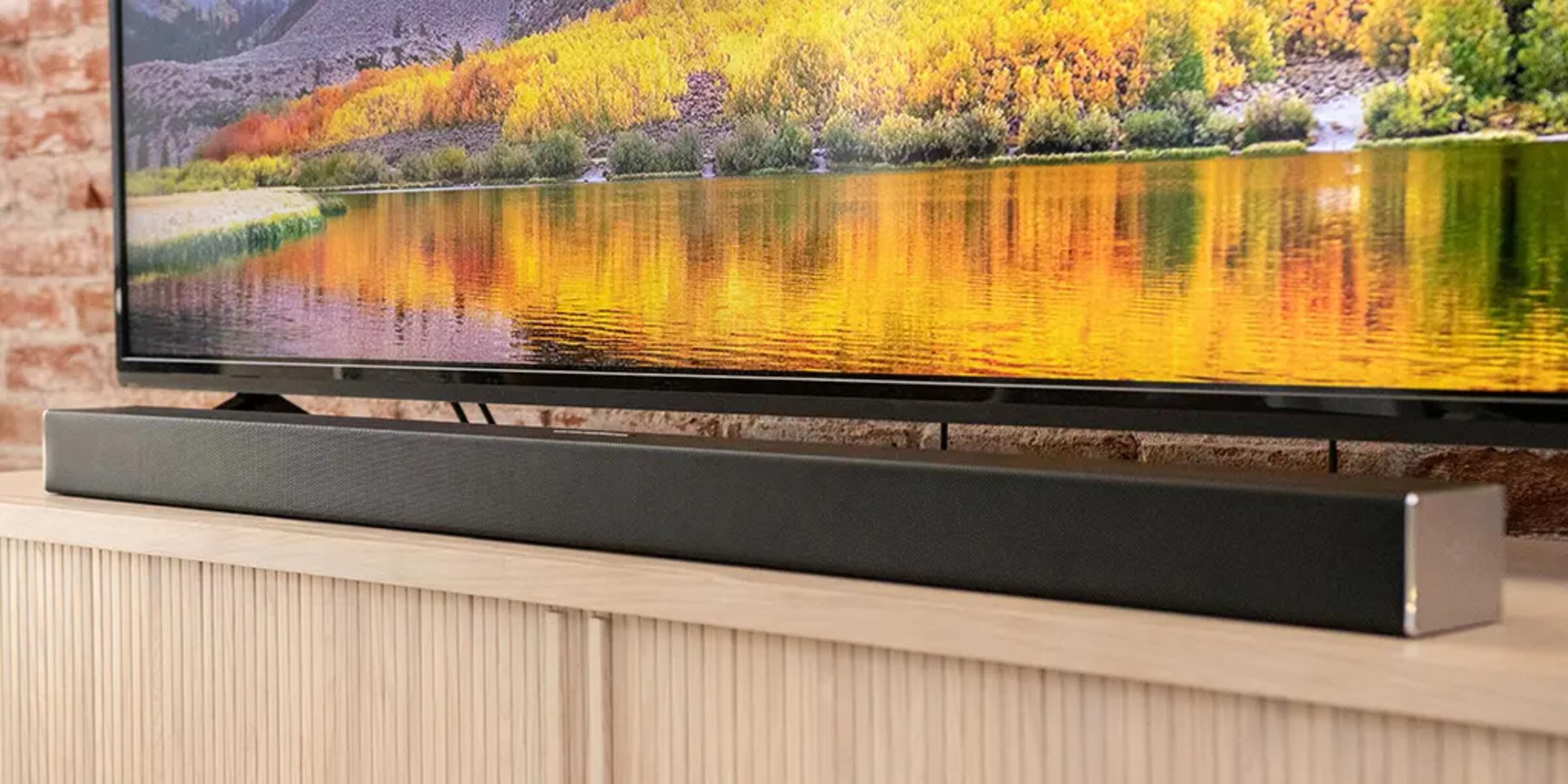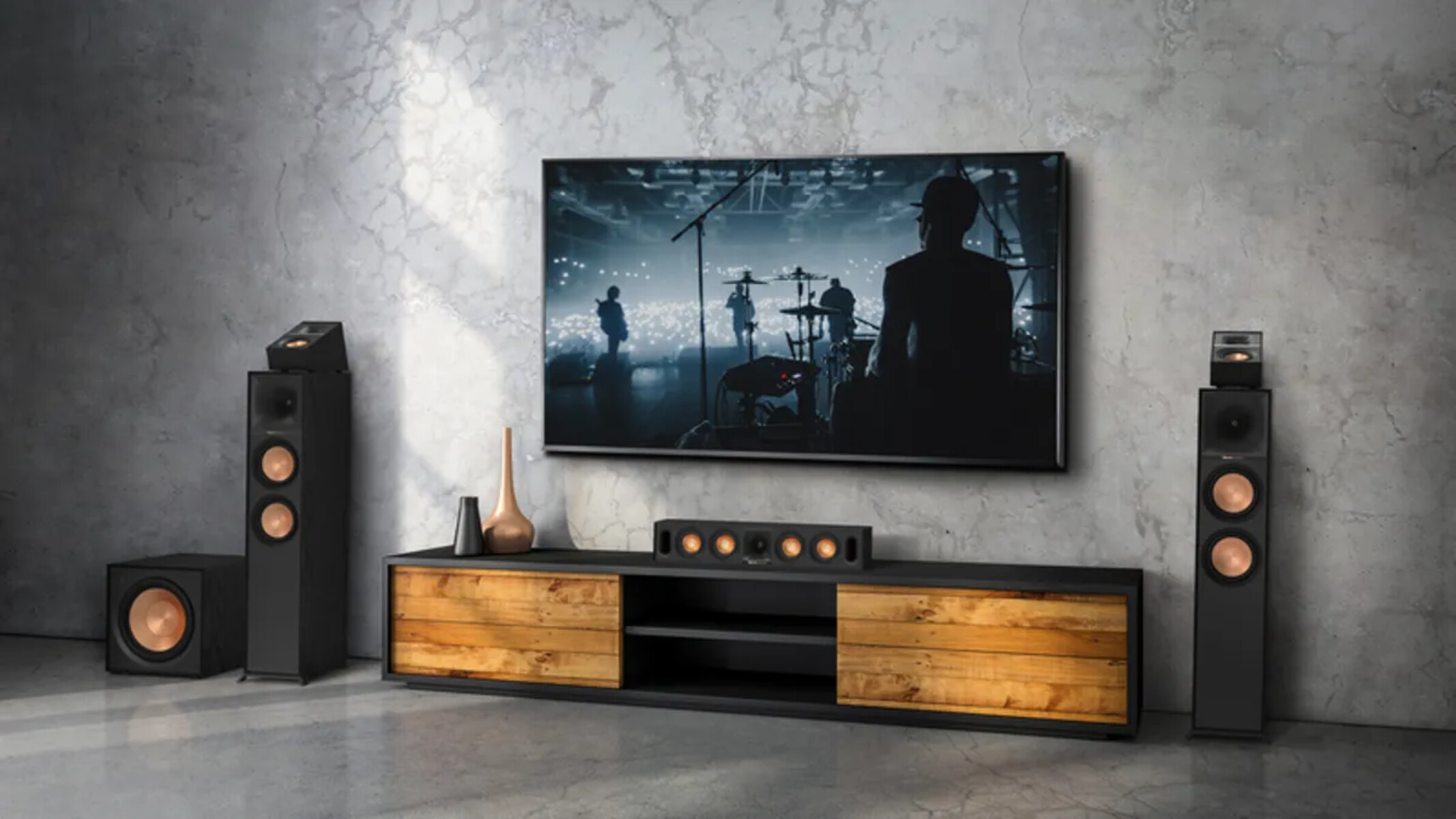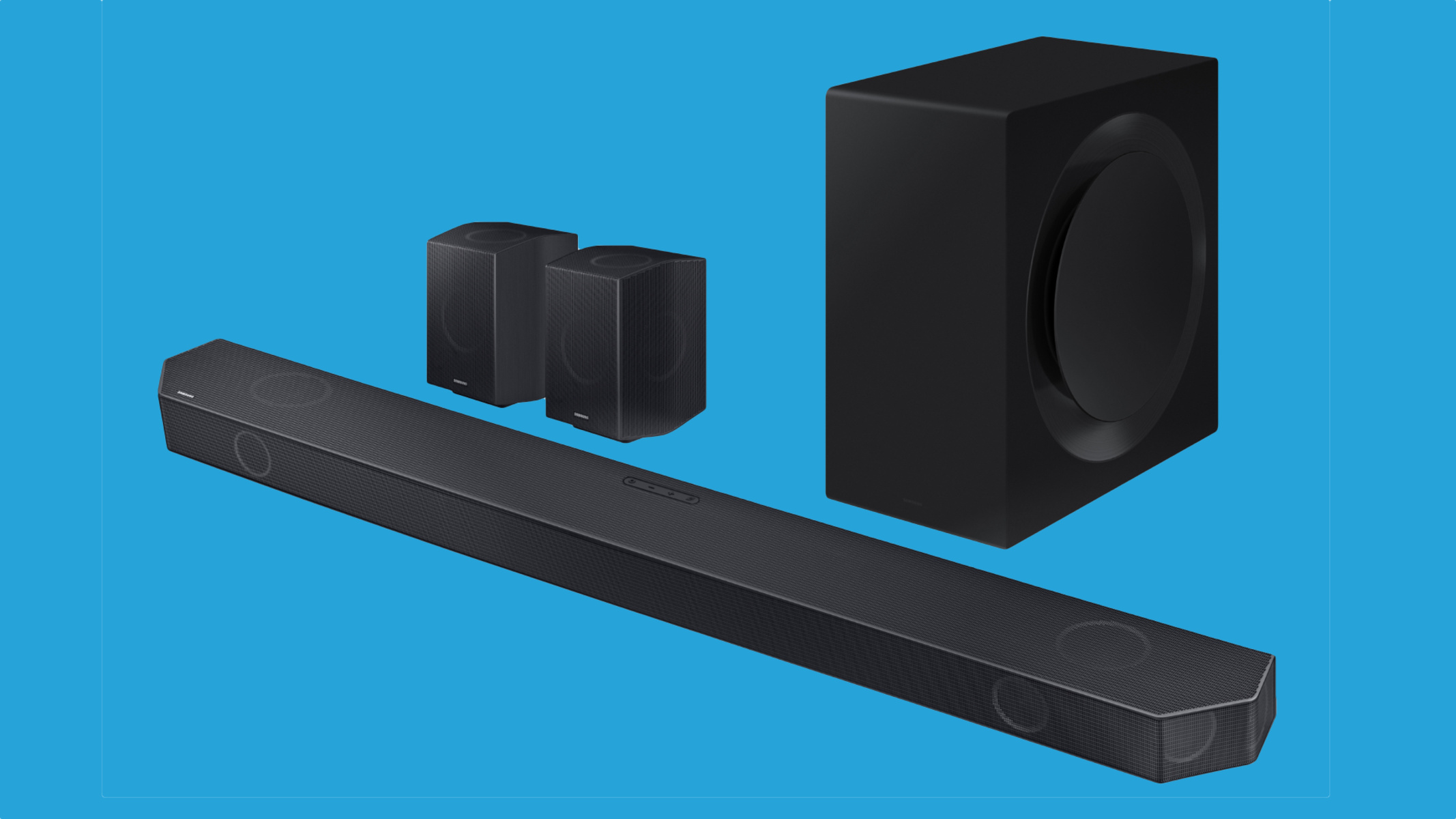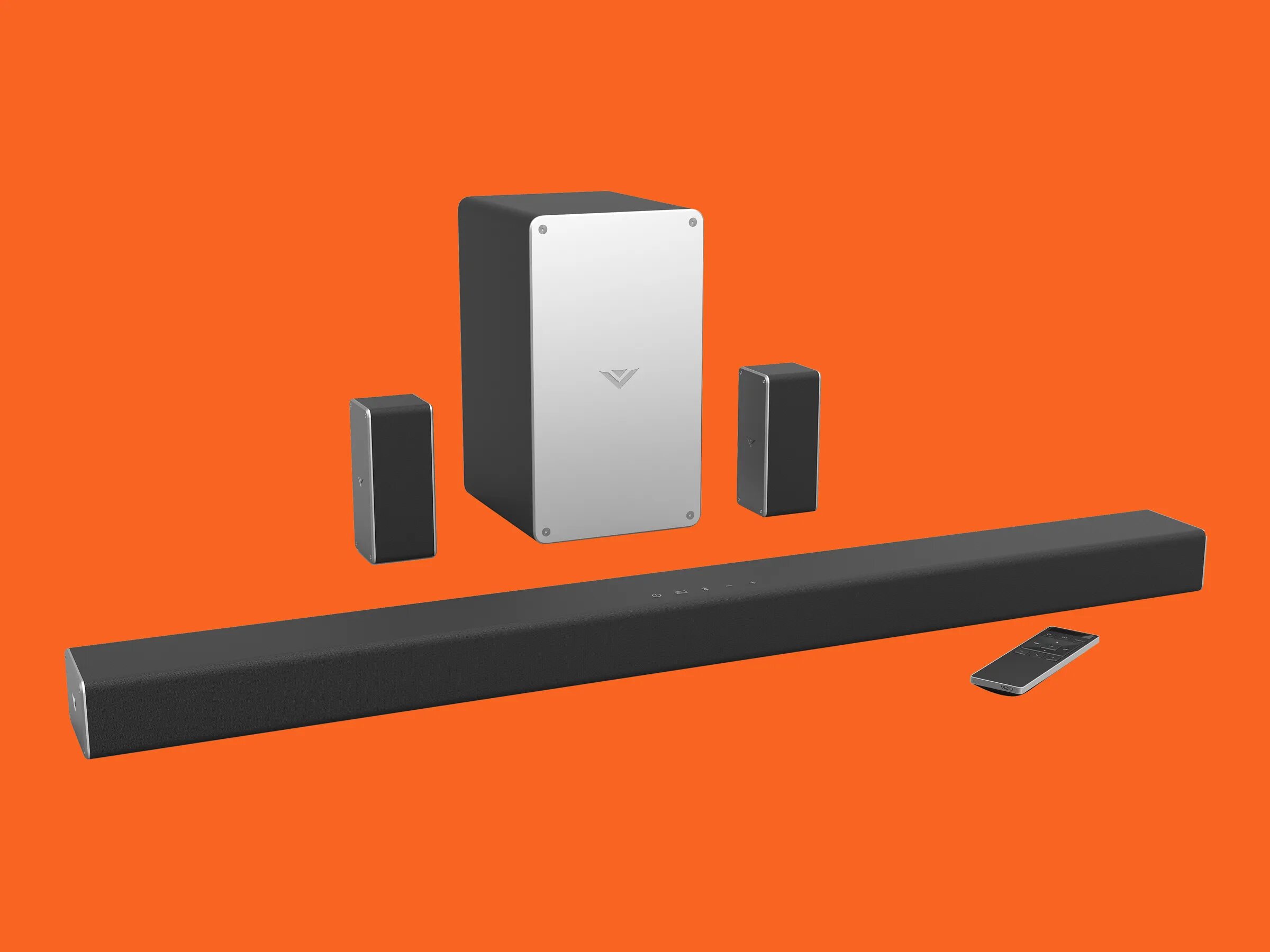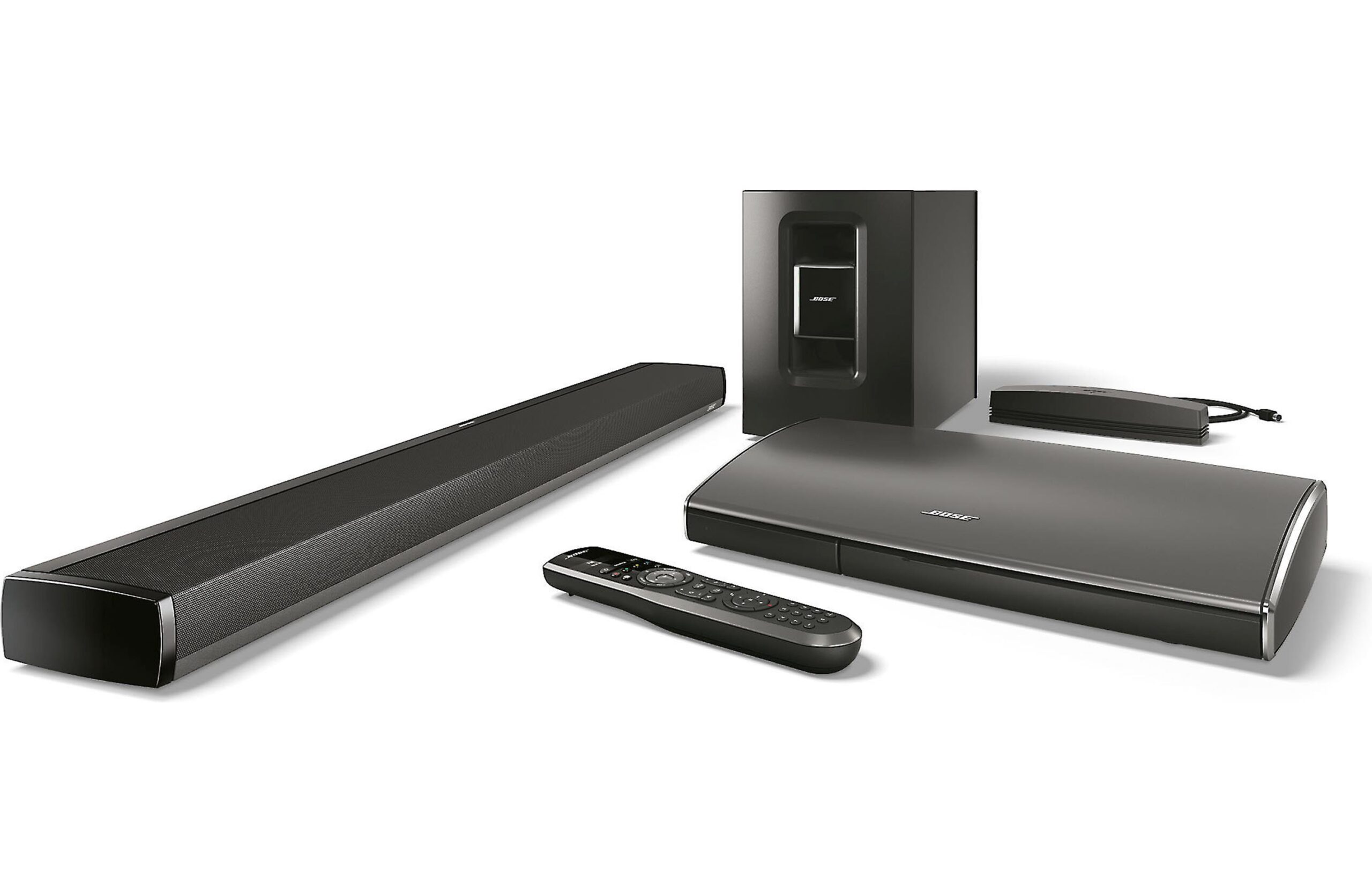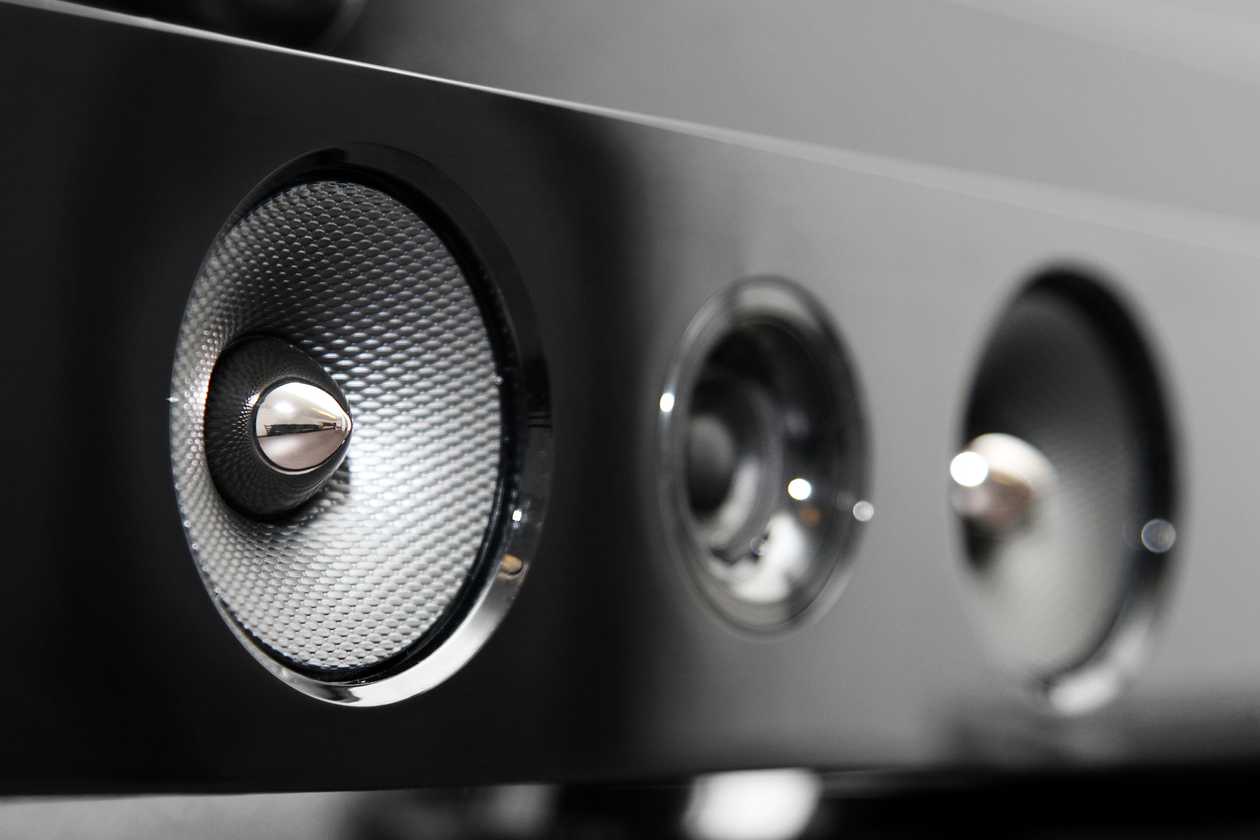Introduction
Welcome to the world of audio technology, where soundbars and surround sound systems vie for your attention. If you’re looking to enhance your home entertainment experience, you might be wondering what the difference is between these two options. Both soundbars and surround sound systems can take your audio to the next level, but they have their unique features and benefits.
A soundbar is a sleek, compact speaker system that is designed to sit in front of your TV or be mounted on a wall. It serves as an all-in-one solution to upgrade your TV’s built-in speakers and deliver a more immersive audio experience. On the other hand, a surround sound system is a collection of speakers strategically placed around the room to create a three-dimensional audio environment.
In this article, we will break down the differences between soundbars and surround sound systems, covering various aspects such as design, audio quality, setup, cost, and more. By the end, you’ll have a clearer understanding of which option might best suit your needs and preferences.
What Is a Soundbar?
A soundbar is a slim and elongated speaker system that is designed to sit below or in front of your TV. It is a popular choice for those who want to enhance the audio quality of their television without the hassle of setting up multiple speakers.
Soundbars typically come in a single or multiple speaker configuration. Single speaker soundbars contain multiple audio drivers within a single unit, while multiple speaker soundbars consist of a main unit and separate satellite speakers for a more immersive experience.
One of the main advantages of a soundbar is its compact design, making it an ideal choice for those with limited space. It neatly integrates with your TV setup, creating a sleek and clutter-free aesthetic. The minimalist design of soundbars also makes them easy to install, as they can be mounted on the wall or placed on a shelf.
When it comes to audio quality, soundbars are designed to enhance the sound output of your TV, providing a clearer and more robust audio experience compared to built-in TV speakers. They often include advanced audio technologies such as Dolby Atmos or virtual surround sound to create a sense of depth and spatial awareness.
Connectivity options vary depending on the model, but most soundbars have multiple input options like HDMI, optical, and Bluetooth. This allows you to connect various devices such as your TV, gaming console, or streaming device to the soundbar, giving you more flexibility in your audio setup.
Some soundbars also come with additional features like built-in subwoofers to enhance bass response, wireless connectivity for hassle-free streaming, and smart functionality for easy integration with other smart home devices.
However, it’s important to note that while soundbars offer significant improvements over typical TV speakers, they may not deliver the same level of immersion as a full surround sound system. The placement and design of soundbars limit their ability to produce true surround sound effects that can completely envelop you in a movie or gaming experience.
In summary, a soundbar is a compact and stylish speaker system that enhances your TV’s audio quality. It is an excellent choice for those seeking an upgrade from built-in TV speakers, providing clearer sound and often incorporating advanced audio technologies for a more immersive experience.
What Is a Surround Sound System?
A surround sound system is a speaker setup that creates a more immersive audio experience by strategically placing multiple speakers around the room. The purpose of this configuration is to create a sense of three-dimensional sound, simulating the feeling of being in the midst of the action.
A typical surround sound system consists of several speakers positioned at specific locations in the room. These speakers are divided into various channels, including front left, front right, center, rear left, rear right, and sometimes a subwoofer for low-frequency effects.
The front speakers, usually placed in front of the viewer, handle the main audio, including dialogue and sound effects. The center speaker plays a crucial role in anchoring dialogue to the center of the screen for a more realistic soundstage. The rear speakers provide ambient sound and enhance the overall immersion, allowing sounds to move around the room and create a sense of space.
Setting up a surround sound system involves carefully placing and calibrating the speakers to ensure optimal sound distribution and balance. Speaker wires are typically routed along the walls or concealed within them to maintain a clean aesthetic. Some surround sound systems may also offer wireless connectivity options for a more convenient setup.
One of the key advantages of a surround sound system is its ability to deliver a true cinematic experience. By reproducing sound from multiple directions, it allows you to feel completely immersed in movies, music, and games. The spatial audio effects make you feel like you’re part of the on-screen action, providing a more engaging and realistic audio experience.
Moreover, surround sound systems often support advanced audio technologies, such as Dolby Digital or DTS, which further enhance the immersive experience. These technologies encode audio with multi-channel information, optimizing the sound reproduction for a more precise and accurate output.
On the downside, setting up a surround sound system can be more complex and time-consuming compared to a soundbar. It requires careful positioning and coordination of multiple speakers, and the wires can be cumbersome to manage. Additionally, the larger number of components involved in a surround sound system can also take up more space in your room.
In summary, a surround sound system is a speaker setup that creates a more immersive audio experience by strategically placing multiple speakers around the room. It offers a true cinematic experience, reproducing sound from various directions and providing a realistic audio environment. However, setting up a surround sound system can be more involved and space-consuming compared to a soundbar.
Design and Size
When it comes to design and size, soundbars and surround sound systems have distinct differences that cater to different preferences and room setups.
Soundbars are known for their sleek and compact design. They are typically long and slim, resembling a horizontal bar that can be placed below your TV or mounted on the wall. This minimalist design allows them to blend seamlessly with your TV setup without drawing too much attention. Soundbars are a popular choice for those who prefer a clean and uncluttered aesthetic, as they take up minimal space and can easily be integrated into any room decor.
On the other hand, surround sound systems have a more varied design and size range. They consist of multiple speakers – front, center, rear, and sometimes a subwoofer – which can be standalone units or satellite speakers. The sizes and shapes of these speakers can vary depending on the brand and model. Front speakers are usually larger and more prominent to handle the primary audio, while the rear speakers tend to be smaller and can be wall-mounted or placed on stands. The subwoofer is typically a separate unit that reproduces low-frequency sounds, adding depth and impact to the audio.
Due to the larger number of components involved, surround sound systems can take up more space in your room compared to soundbars. The placement of the speakers also requires careful consideration, as they need to be positioned at specific locations to achieve optimal audio distribution.
It’s worth noting that soundbars have advanced in design, with some models now offering additional features to give the illusion of a more immersive surround sound experience. These soundbars use acoustic technologies to bounce sound off the walls, mimicking the effect of having rear speakers. However, it’s important to keep in mind that these virtual surround sound capabilities may not provide the same level of immersion as a true surround sound system.
Overall, if you prioritize a sleek and space-saving design, a soundbar is the way to go. Soundbars are perfect for those who want to upgrade their TV audio without the need for multiple speakers taking up space in their living room. However, if you have a dedicated home theater room and value the ultimate immersive experience, a surround sound system with its larger speakers strategically placed around the room is the ideal choice.
Audio Quality
When it comes to audio quality, both soundbars and surround sound systems offer unique capabilities that cater to different listening preferences.
Soundbars are designed to enhance the audio output from your TV and provide a noticeable improvement over built-in TV speakers. They typically employ various audio technologies and signal processing algorithms to deliver clearer, more detailed sound. Some soundbars even feature advanced technologies like Dolby Atmos or DTS:X, which create a multidimensional soundstage and heighten the immersive experience.
The audio quality of a soundbar largely depends on the number of speakers and drivers it incorporates. Single speaker soundbars utilize built-in drivers to produce a wide range of frequencies, while multiple speaker soundbars distribute audio across different channels for better separation and spatialization. Additionally, soundbars often include built-in subwoofers or offer the option to connect external ones for enhanced bass response, adding depth and impact to music and movies.
On the other hand, a surround sound system is typically known for providing the most immersive audio experience. With multiple speakers placed around the room, it creates a three-dimensional soundstage that envelops the listener and brings movies, music, and games to life. The strategic placement of speakers ensures that sound effects are accurately positioned and move across the room, providing a more realistic and captivating audio experience.
Surround sound systems are capable of delivering true surround sound effects, which means you can hear sounds coming from different directions, just like in a movie theater or concert hall. Dialogues are more distinct, and sound effects are more impactful, offering a level of immersion that soundbars may struggle to replicate.
However, it’s important to note that the quality of audio can vary depending on the specific soundbar or surround sound system you choose. Factors such as the brand, audio processing technology, and the overall build quality of the speakers can greatly influence the audio performance. Reading reviews and listening to demos can help you make an informed decision when it comes to choosing the right soundbar or surround sound system for your needs.
In summary, soundbars offer improved audio quality compared to built-in TV speakers and often incorporate advanced audio technologies for a more immersive experience. However, surround sound systems excel in delivering true surround sound effects and creating a more captivating audio environment. Ultimately, the choice between the two will depend on your preferences for audio immersion and the space you have available in your room.
Sound Distribution
Sound distribution is an important aspect to consider when comparing soundbars and surround sound systems, as they differ in their ability to create a spatial soundstage within your living space.
Soundbars are designed to provide an improved audio experience in a compact form factor. While they can offer impressive audio quality, their ability to distribute sound across the room and create a wide soundstage is limited. This is mainly due to their single or multiple speaker configuration being confined to a single unit. Soundbars generally project sound directly forward, aiming to create a more immersive experience for the listener positioned directly in front of the soundbar.
Some soundbars employ advanced audio processing algorithms to simulate a wider soundstage. They may use technologies like virtual surround sound or sound projection techniques that bounce audio off walls to create a sense of spatial audio. While these methods can enhance the listening experience and provide a sense of immersion, they may not match the level of sound distribution achieved by a true surround sound system.
On the other hand, surround sound systems excel in sound distribution. With multiple speakers placed strategically around the room, they create a three-dimensional soundstage that immerses the listener in a more realistic audio environment. The front speakers handle the main audio, while the rear speakers provide ambient sounds and create a sense of depth and movement. This spatial audio distribution allows you to experience sounds coming from different directions, enhancing the overall immersive experience.
Surround sound systems also provide the ability to fine-tune the speaker placement to optimize sound distribution. By carefully positioning the speakers, calibrating the audio levels, and taking into account the room’s acoustics, you can achieve a well-balanced soundstage that envelops you in the audio.
It’s important to consider the size and layout of your living space when considering sound distribution. If you have a smaller room or prefer a more focused audio experience at the listening position, a soundbar can provide a satisfactory soundstage. However, if you have a larger room and desire a truly immersive audio environment with sound coming from all directions, a surround sound system’s capability to distribute sound throughout the room is unmatched.
In summary, soundbars have a more limited sound distribution due to their compact design and speaker placement. While they can provide an enhanced audio experience for the listener positioned directly in front of them, they may not achieve the same level of sound distribution as surround sound systems. Surround sound systems, with their multiple speakers placed strategically around the room, excel in creating a wide and immersive soundstage that envelops the listener in a realistic audio experience.
Setup and Installation
The setup and installation process for soundbars and surround sound systems can vary in complexity and requirements. Understanding the differences in this aspect can help you determine which option is more suitable for your needs and preferences.
Soundbars are renowned for their simplicity and ease of installation. They are designed to be plug-and-play devices, often coming with a single unit that houses all the necessary components. Setting up a soundbar usually involves connecting it to your TV using an HDMI or optical cable. Some soundbars may also offer wireless connectivity options such as Bluetooth, allowing you to easily connect your audio sources without dealing with cables.
In terms of placement, soundbars are quite flexible. They can be positioned below your TV on a stand or mounted on the wall using brackets. Mounting usually requires minimal drilling and can provide a sleek and space-saving setup. With their compact design and minimal wiring, soundbars are an excellent choice if you have limited space or prefer a clean and clutter-free setup.
Surround sound systems, on the other hand, have a more involved setup process. They typically consist of multiple speakers – front, center, rear – and sometimes a subwoofer. The placement of these speakers plays a crucial role in achieving optimal sound distribution.
Setting up a surround sound system involves positioning the front speakers on either side of the TV, facing the listener. The center speaker should be placed below or above the TV to anchor dialogues to the screen. The rear speakers are positioned behind or beside the listener, creating a sense of depth and immersing them in the audio. Additionally, subwoofers are often placed near the front speakers to handle the low-frequency sounds.
The wiring for surround sound systems can be more complex compared to soundbars. You may need to route speaker wires along the walls or conceal them within the walls for a clean and professional look. Some modern surround sound systems offer wireless connectivity options for the rear speakers, reducing the need for long cables. However, keep in mind that the connections between the AV receiver, speakers, and audio sources still require wired connections.
Overall, soundbars provide a hassle-free setup process, making them a popular choice for those seeking simplicity and convenience. Surround sound systems, on the other hand, require more planning and effort during the installation process due to the positioning and wiring requirements. However, the extra effort can be worth it for the superior audio immersion that surround sound systems provide.
It’s important to consider your level of technical expertise and the setup requirements of your chosen audio system when making your decision. If you prefer a straightforward and easy installation process, a soundbar is a great choice. If you are willing to invest time and effort for a more immersive audio experience, a surround sound system can transform your home entertainment setup.
Cost
When it comes to cost, soundbars and surround sound systems can differ significantly depending on the brand, features, and audio quality they offer. Understanding the cost factor can help you make an informed decision based on your budget and desired audio experience.
Soundbars generally offer a more affordable option compared to surround sound systems. The price range for soundbars varies depending on the brand, audio capabilities, and additional features such as built-in subwoofers or smart functionalities. Entry-level soundbars can be found for as low as $100, while high-end models with advanced audio technologies and premium build quality can range from $500 to over $1000.
In contrast, surround sound systems typically involve buying multiple speakers and components, which can make them more expensive. The cost of a surround sound system can vary greatly depending on the number of speakers, the quality of the components, and the presence of advanced features like wireless connectivity or support for Dolby Atmos. Entry-level surround sound systems can start around $200, while more advanced setups with higher-end speakers and receivers can cost upwards of $1000 or more.
It’s important to consider your budget and desired audio experience when evaluating the cost of soundbars and surround sound systems. While soundbars may offer a more affordable option, they may not provide the same level of audio immersion and surround sound effects as a dedicated surround sound system. However, if you have a limited budget or limited space in your room, a soundbar can still offer a significant audio enhancement compared to standard TV speakers.
While considering the cost, it’s also crucial to keep in mind that the overall audio experience is not solely determined by the price tag. Factors such as the brand’s reputation, build quality, audio capabilities, and personal listening preferences should also be taken into account. Reading reviews, conducting comparisons, and listening to audio demos can help you determine the best value for your investment.
Ultimately, the decision between a soundbar and a surround sound system comes down to your budget, room size, desired audio experience, and personal preferences. If you are on a tight budget or have limited space, a soundbar might be the more practical choice. However, if you are willing to invest more for a true surround sound experience and have the room to accommodate multiple speakers, a surround sound system can provide a more immersive and captivating audio experience.
Compatibility and Connectivity Options
When it comes to compatibility and connectivity options, both soundbars and surround sound systems offer various features to ensure seamless integration with your audio sources and devices.
Soundbars generally have a range of connectivity options that allow you to connect them to different devices. Most soundbars come equipped with HDMI inputs and outputs, allowing you to connect your TV, gaming console, Blu-ray player, or streaming devices. This HDMI connection can often support advanced audio formats like Dolby Atmos or DTS:X, providing a more immersive audio experience. Additionally, soundbars usually offer optical and analog audio inputs as alternative connection options.
Wireless connectivity is another common feature in many soundbars. Bluetooth is a popular option that lets you pair your smartphone, tablet, or other compatible devices to the soundbar for easy streaming of music or other audio content. Some advanced soundbars also offer Wi-Fi connectivity, allowing for multi-room audio and integration with voice assistants like Alexa or Google Assistant.
When it comes to compatibility, soundbars are designed to be compatible with a wide range of TVs. They can easily connect to most TVs through HDMI ARC (Audio Return Channel) or optical connections. However, it’s always a good idea to check the compatibility specifications and recommended setups for your specific TV and soundbar model.
Surround sound systems, on the other hand, typically rely on a central audio-video (AV) receiver to serve as the hub for connecting and controlling the speakers. The AV receiver acts as the intermediary between your audio sources and the speakers, decoding and amplifying the audio signals to each speaker. It usually provides multiple HDMI inputs, allowing you to connect various devices like your TV, gaming consoles, Blu-ray players, and more.
In terms of compatibility, surround sound systems can work with any TV that has an HDMI ARC or optical audio output. The AV receiver connects to the TV, and the speakers are connected to the receiver. It’s important to ensure that the AV receiver and speakers you choose are compatible with each other. Some surround sound systems may also offer wireless connectivity options for the rear speakers, reducing the need for running speaker wires across the room.
It’s worth noting that some soundbars and surround sound systems offer additional features to enhance compatibility and connectivity. These features may include HDMI-CEC (Consumer Electronics Control) which allows your TV remote to control the soundbar or the AV receiver, or even voice control integration with virtual assistants like Alexa or Google Assistant.
When deciding between a soundbar and a surround sound system, it’s important to consider the compatibility of the audio sources you plan to connect, as well as the connectivity options of the soundbar or surround sound system. If you have multiple devices with HDMI outputs and desire the convenience of wireless connectivity, a soundbar with HDMI ARC and Bluetooth may be a suitable choice. However, if you have a wider range of audio sources and prefer the flexibility of connecting multiple devices to a central AV receiver, a surround sound system may be a better fit.
Additional Features
When comparing soundbars and surround sound systems, it’s important to consider the additional features they offer beyond their core audio capabilities. These features can enhance your audio experience and provide added convenience and functionality.
Soundbars often come with built-in subwoofers or offer the option to connect external ones. Subwoofers are dedicated speakers that reproduce low-frequency sounds, adding depth and impact to movies, music, and games. Having a built-in or external subwoofer can greatly enhance the overall audio experience, providing rich and powerful bass response.
Many soundbars also offer different sound modes or equalizer presets that cater to different content types. These modes optimize the sound output based on the source material, whether it’s movies, music, or sports. Some soundbars even have dialogue enhancement features that improve the clarity of dialogues, making them easier to hear and understand.
Bluetooth connectivity is another common feature in modern soundbars, allowing you to wirelessly stream music from your smartphone, tablet, or other Bluetooth-enabled devices. This gives you the flexibility to enjoy your favorite music without the need for additional cables or devices.
Some high-end soundbars also incorporate smart features and voice control compatibility. They can be integrated with popular voice assistants like Alexa or Google Assistant, allowing you to control the soundbar and other smart devices using voice commands. This hands-free control adds convenience and ease of use to your audio setup.
Surround sound systems may offer additional features through their AV receivers. These receivers often have built-in audio processing features like room correction or equalization to optimize the sound output based on the room’s acoustics. They may also support advanced audio formats like Dolby Atmos or DTS:X, delivering a more immersive and three-dimensional sound experience.
Some AV receivers also include multiple HDMI inputs and outputs, allowing you to connect and switch between various audio and video sources seamlessly. This makes it convenient when you have multiple devices like gaming consoles, Blu-ray players, or streaming devices that you want to connect to your surround sound system.
Furthermore, surround sound systems typically have the ability to expand and be upgraded. You can add additional speakers or swap out individual components to enhance the audio quality or accommodate changes in your room setup over time. This expandability allows you to customize and adapt your surround sound system based on your evolving needs.
When considering additional features, it’s important to assess your specific audio requirements and preferences. If you value convenience and simplicity, soundbars with built-in subwoofers, sound modes, and Bluetooth connectivity may provide everything you need. On the other hand, if you desire advanced audio processing features, expandability, and the ability to upgrade, a surround sound system with its AV receiver and customizable components may be the more suitable choice.
Pros and Cons of Soundbars
Soundbars offer several advantages and disadvantages that are important to consider when deciding whether a soundbar is the right audio solution for your needs.
Pros:
- Space-saving design: Soundbars are slim and compact, making them a suitable option for smaller spaces or minimalist setups where you want to avoid clutter.
- Easy installation: Soundbars are typically plug-and-play devices that require minimal setup. They can be easily mounted on the wall or placed below the TV without the need for extensive wiring.
- Improved audio quality: Soundbars offer a significant upgrade over built-in TV speakers, delivering clearer and more powerful sound. They often incorporate advanced audio technologies to enhance the audio experience.
- Cost-effective: In general, soundbars are more affordable compared to surround sound systems. They provide a noticeable improvement in audio quality without the need for multiple speakers and components.
- Flexibility in placement: Soundbars can be placed in various configurations, including below the TV or mounted on the wall. This flexibility allows you to find the optimal position for the soundbar in your room.
Cons:
- Limited sound distribution: Due to their single or multiple speaker configuration, soundbars have limitations in creating a wide soundstage. They are optimized for audio projection in front of the listener rather than creating an immersive surround sound experience.
- Less immersive surround sound effects: While some soundbars employ virtual surround sound technology, they may not deliver the same level of immersion as a true surround sound system with multiple speakers placed around the room.
- Lack of expandability: Soundbars are typically all-in-one units, which means their capabilities and features cannot be easily upgraded or expanded. If you desire additional speakers or want to customize your audio setup, soundbars may not offer the necessary flexibility.
- Dependency on TV audio output: Soundbars rely on the audio output of the TV, which means the audio quality may still be limited by the TV’s capabilities. If your TV has poor audio output, the soundbar’s potential may be limited as well.
Considering these pros and cons of soundbars can help you determine whether a soundbar meets your specific audio requirements and preferences. If you have limited space, a smaller budget, and value simplicity and improved audio quality, a soundbar can be an excellent choice. However, if you desire a more immersive and customizable audio experience or have a larger room, a surround sound system may better suit your needs.
Pros and Cons of Surround Sound Systems
Surround sound systems offer a range of advantages and disadvantages that should be considered when deciding if a surround sound system is the right audio solution for your needs.
Pros:
- Immersive audio experience: Surround sound systems excel at creating a captivating and immersive audio environment. By strategically placing multiple speakers around the room, they provide true surround sound effects that can envelop you in an audio experience similar to that of a movie theater.
- Superior sound distribution: Surround sound systems disperse sound throughout the room, creating a more realistic and spatial soundstage. With speakers placed at various locations, they can accurately reproduce audio effects and movements, enhancing the overall immersive experience.
- Customizability and expandability: Surround sound systems offer flexibility and versatility. They allow for customization according to your room size, preferences, and budget. You have the option to add or upgrade speakers, amplifiers, or the AV receiver to enhance the overall audio performance over time.
- Wide audio compatibility: Surround sound systems typically support various audio formats and technologies, such as Dolby Atmos or DTS:X. This wide audio compatibility allows you to enjoy high-quality, immersive audio from a range of sources.
- Enhanced audio for different content: With their specialized speakers and channels, surround sound systems are optimized for different types of content. They can reproduce dialogues, music, and sound effects with greater clarity and accuracy, resulting in a more engaging audio experience.
Cons:
- Larger size and complex installation: Surround sound systems require more space and careful placement of multiple speakers around the room. The installation process can be more involved, requiring additional wiring and configuration, which may not be suitable for smaller living spaces or those seeking a simpler setup.
- Higher cost: Compared to soundbars, surround sound systems can be more expensive due to the need for multiple speakers, an AV receiver, and other components. The cost can increase further if you opt for higher-end speakers or advanced audio technologies.
- Room layout limitations: The placement of speakers in a surround sound system is crucial for optimal sound distribution. The size and layout of your room can influence the effectiveness of the surround sound system, and certain room configurations may not be ideal for achieving optimal audio immersion.
- Dependency on audio sources and formats: Surround sound systems rely on audio signals from your sources, such as a Blu-ray player or gaming console, to provide an immersive audio experience. If the audio content is not encoded in a surround sound format, the system’s capabilities may not be fully utilized.
- Regular maintenance and calibration: Surround sound systems may require occasional maintenance, such as cleaning and calibration, to ensure optimal performance. Depending on the complexity of the system, this may involve adjustments to speaker positions, checking cables, or updating firmware.
Considering these pros and cons of surround sound systems can help you evaluate whether a surround sound system aligns with your audio preferences and requirements. If you prioritize an immersive and customizable audio experience, have a larger room, and are willing to invest in a more involved setup, a surround sound system can offer unparalleled audio immersion. However, if you have limited space, a smaller budget, or prefer a simpler installation process, a soundbar may be a more practical choice.
Which Option is Right for You?
Choosing between a soundbar and a surround sound system ultimately depends on your specific needs, preferences, and the characteristics of your space. Consider the following factors to determine which option is the best fit for you:
Room Size: Soundbars are ideal for smaller spaces or rooms where you want to keep the setup clean and minimalist. They take up less space and offer a simple installation process. Surround sound systems, on the other hand, are better suited for larger rooms where you have the space to position multiple speakers strategically.
Budget: Soundbars tend to be more affordable compared to surround sound systems. If you have a limited budget but still want to enhance the audio quality of your TV, a soundbar is a cost-effective option. Surround sound systems, while more expensive due to the additional speakers and components needed, offer a higher level of audio immersion.
Audio Immersion: If you prioritize an immersive audio experience that closely resembles a movie theater or concert, a surround sound system with its multiple speakers can provide the most accurate and enveloping sound. Soundbars can still enhance the audio quality compared to built-in TV speakers, but they may not deliver the same level of audio immersion as a surround sound system.
Convenience and Simplicity: Soundbars are designed for simplicity and ease of use. They offer a straightforward installation process, require minimal wiring, and are generally plug-and-play devices. Surround sound systems involve more components and wiring, making them more complex to set up and requiring careful placement of speakers. If you prefer a hassle-free setup and minimal wiring, a soundbar may be more suitable.
Expandability and Customization: If you want the flexibility to upgrade or customize your audio setup over time, a surround sound system provides more options. You can add additional speakers or upgrade individual components to improve the audio performance. Soundbars, on the other hand, are typically all-in-one units, limiting your ability to expand or customize beyond what the soundbar offers.
Personal Preferences: Ultimately, your personal audio preferences play a significant role in determining which option is right for you. Consider factors such as the types of content you enjoy, whether you prioritize bass response, dialogue clarity, or overall surround sound effects.
By considering your room size, budget, desired audio immersion, convenience, expandability, and personal audio preferences, you can determine whether a soundbar or a surround sound system is the right choice for you. Remember that both options have their own strengths and limitations, so it’s important to prioritize what matters most to you in your audio experience.
Conclusion
Choosing between a soundbar and a surround sound system ultimately comes down to your specific needs, preferences, and the characteristics of your living space. Understanding the differences and considering factors such as room size, budget, desired audio immersion, convenience, expandability, and personal preferences can help you make an informed decision.
If you have limited space, a smaller budget, and prefer a clean and minimalist setup, a soundbar can be an excellent choice. Soundbars offer improved audio quality compared to built-in TV speakers, are easy to install, and come in a variety of options to suit different preferences and budgets. They provide a cost-effective solution to enhance your TV audio experience without the need for multiple speakers and complex wiring.
On the other hand, if you desire a truly immersive audio experience and have a larger room with the flexibility to position multiple speakers, a surround sound system can take your home entertainment to the next level. Surround sound systems provide a more realistic and enveloping audio environment, putting you in the center of the action and creating a cinematic experience right in your living room.
It’s important to note that both soundbars and surround sound systems have their own pros and cons. Soundbars excel in simplicity, space-saving design, and affordability, while surround sound systems offer superior sound distribution, customization options, and a higher level of audio immersion.
In the end, the right choice depends on your priorities and the audio experience you seek. Whether you opt for a soundbar or a surround sound system, both options can significantly enhance your home entertainment, providing you with better audio quality and a more engaging viewing experience. Remember to consider your budget, room size, desired audio immersion, convenience, and personal preferences when making your decision.
Regardless of your choice, investing in an audio solution that suits your needs will surely elevate your enjoyment of movies, music, games, and other forms of entertainment in the comfort of your own home.







